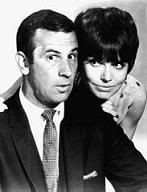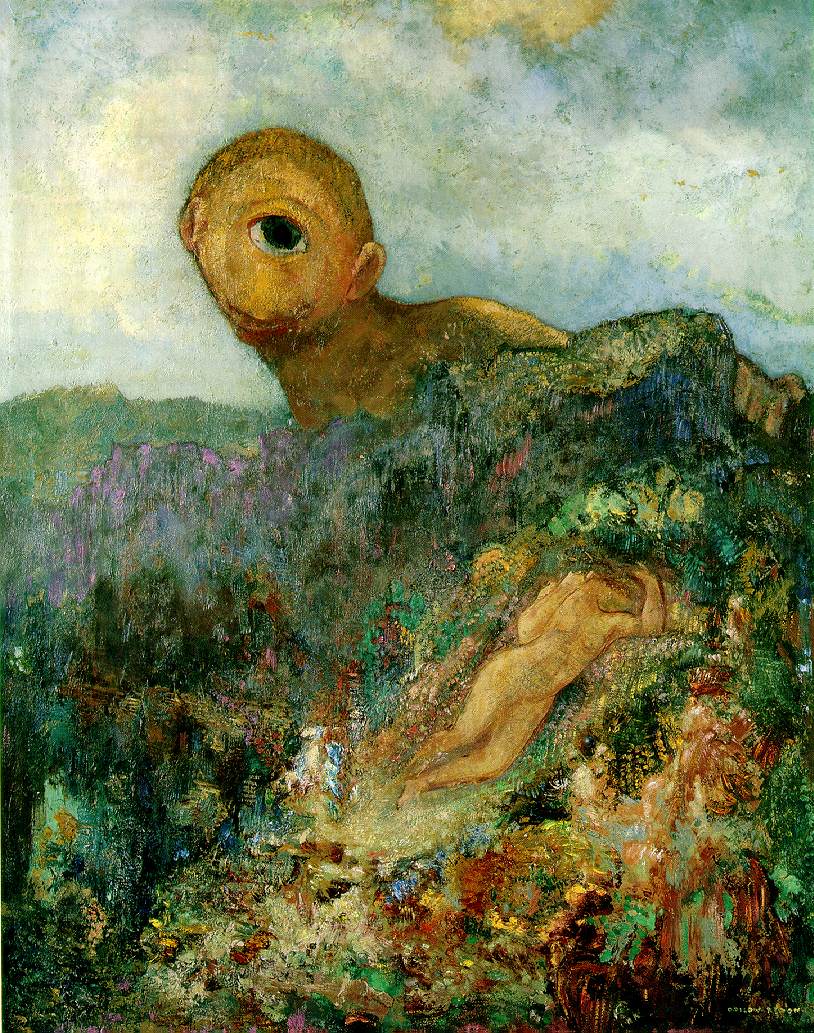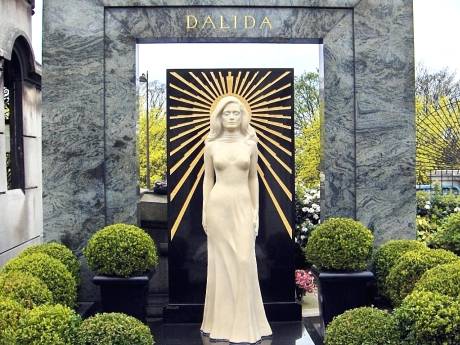Post by GetSmart on Dec 12, 2009 20:23:23 GMT -5
For those of you who know the Opera, Maria Callas is renowned as the leading Opera singer of the 20th Century with a soul turning voice which could raise the dead.
She was the most famous Diva, true to the legend from her temperamental personality to her extreme dedication to her art. She demanded much from everyone and far more yet from herself.
It was at the apex of her career that she fell in love with Aristotle Onassis, a Greek shipping tycoon known for his intelligence connections and who set up the Societe des Bains de Mer to launder for the CIA and the Mafia in Monte Carlo. He managed to push Prince Ranier of Monaco out of this company taking it over completely and becoming in effect the de facto ruler over Monaco.
Maria Callas with Aristotle Onassis

Also of Greek origin, Maria Callas was swept off her feet by Onassis whom she wanted to marry, the illusion was perfect according to her friends accounts. Perfect to all but her devoted husband and manager Giovanni Battista Meneghini who was unable to fight off the aggressive attentions of Onassis.
Maria sandwiched between her husband and her lover
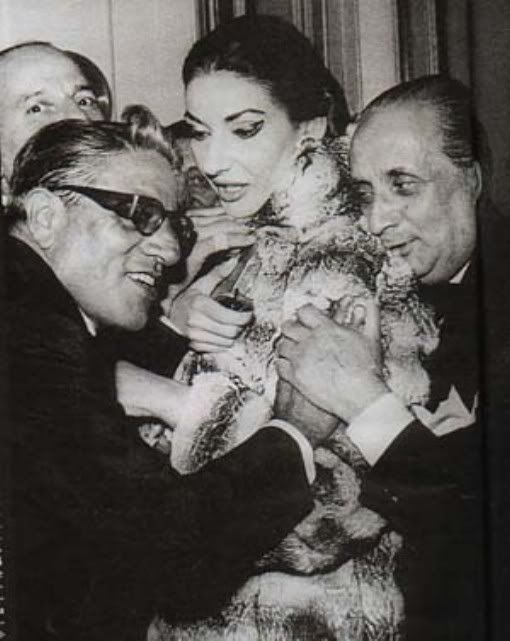
But they maybe didn't know everything there was to know about her past, her upbringing and her true origins.
One century earlier, there was another Mezzo Soprano who was world renowned, venerated as the leading Diva in her day. She was the younger sister of the admired Maria Malibran whose voice amazed and whose artistry was honed when rehearsing with Frantz Liszt and performing with Clara Schumann.
She lived a long life as can be seen in the comparisons of her portrait at different ages. Daughter of a noted opera singer, her name was Pauline Garcia and she married theater director and critic Louis Viardot and became also known as Pauline Viardot.

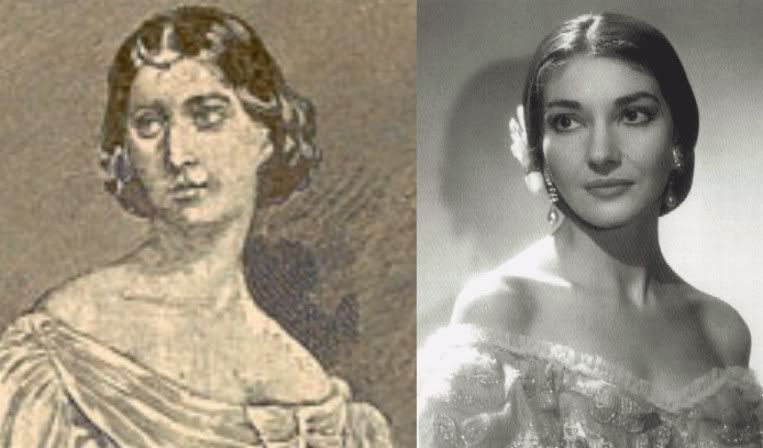
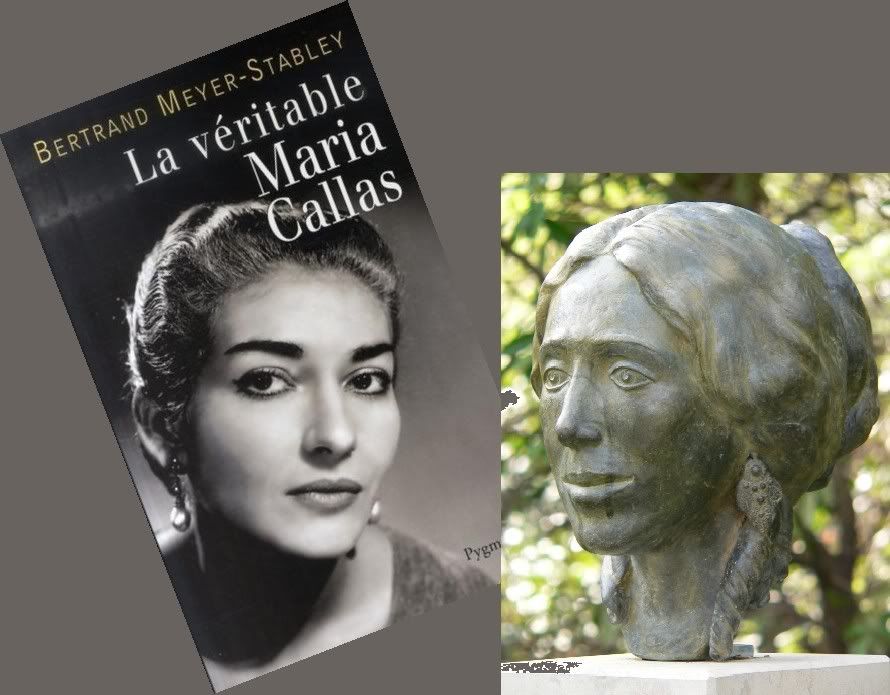
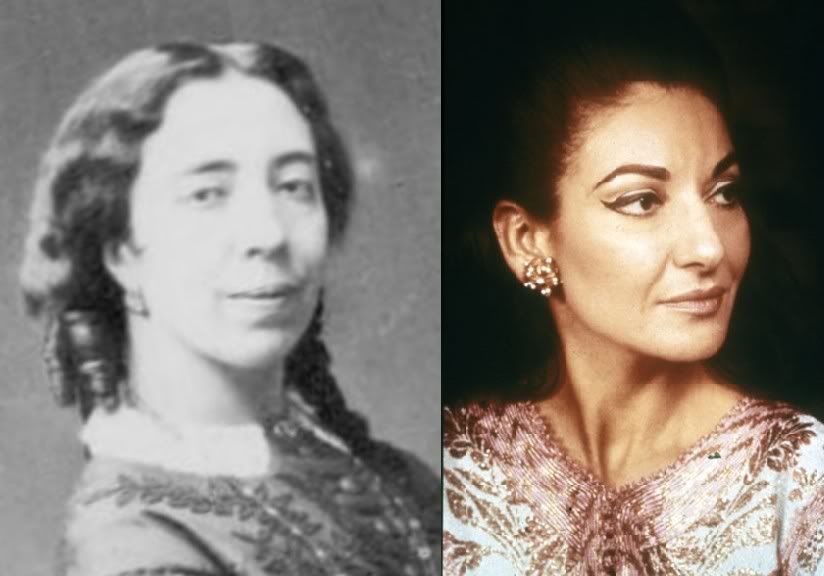
Maria Callas somehow changed considerably during her romance with Onassis. She frequently stayed with him on his yacht Christina which was the largest in the world, a former Canadian Navy vessel converted for other purposes. Was it to house CIA cloning and Mind Control operations at sea, in international waters? Regardless, here is an account of her best friend of how Maria Callas changed significantly in 1966. This conversation is from the outtakes to the film Opera Fanatic: Stefan and the Divas, in which Stefan Zucker speaks with opera singer Giulietta Simionato, companion to Maria Callas.
SZ: What were the reasons for the decline of Callas's voice?
GS: Onassis. Leading the life she did, a very social life. He took her into the highest circles. She no longer was herself because she no longer had her music. And later, when she went to make the film Medea, with Pasolini, I said to her, "You are music incarnate. By abandoning music, it is only natural that your voice has abandoned you. Now you want to resume your career. But Maria, dear, you can't hope to resume it, for there has been such a rupture in your career that even psychologically you never can regain the success you had once." She listened. I could say anything to Maria. I could tease her, scold her, advise her. She asked me for advice--I never would have dared offer it to her. We were good companions. If we felt like talking, we talked. If we didn't feel like talking, we remained silent. If one wanted to go to a museum and the other said, "Today I'm a little tired," the other would say, "That's all right; I'll go by myself." No one was offended. Maria and I got along very well.
SZ: Before she met Onassis, was there no decline in Callas's voice?
GS: No, no.
SZ: Did the voice change over the years?
GS: Yes, it's as if it shattered because something in her broke. After this change in her style of living, without music, Maria no longer was herself.
SZ: In '59 or '60, was her voice the same as in '48?
GS: I would say yes. In fact there was an added maturity. With her knowledge of technique and studying the way she did and with an instrument that still was sound, she still could do what she wanted. There were no weaknesses. Her ruin really was that man.
SZ: In '48 the voice was broad, wide-ranging and somewhat heavy whereas....
GS: It hadn't gotten heavier--more dramatic perhaps. Since she no longer sang the leggero repertoire, the voice naturally had become more robust.
SZ: According to you, was the voice more robust in '58 or '59 than in '48?
GS: It's difficult for me to remember now if it was robust in one period but not another. I can't give you a precise answer.
MY HYPOTHESIS FOLLOWS:
It is my assumption that she had been cloned again or otherwise replaced. Not letting music back into her life is far too inconsistent for someone so deeply dedicated to her career and this art. We must consider the alternative.
She 'changed' in the year 1966, the same year James Paul McCartney of The Beatles was replaced by a doppelganger we've come to call Faul. We have assumed that it may have been for an occult Illuminati bloodline Elite Satanic ritual human sacrifice in the case of Paul. Maria Callas may have endured the same fate in the same ceremony upon also being replaced for public consumption.
The ritual death of Princess Diana is another of such events, the reading of which might help you better understand why I think that this may be what occurred. Here is a link:
Diana's Ritual Death
The ancient Incas would sacrifice the most admired and beautiful to honor their Reptilian Serpent God. This could still be the case with the Bloodline Royal Elites who indulge in the Serpent Cult. Before discounting this possibility it is necessary to fully investigate the issues and determine what other interpretation can be given for the web of evidence which invariably points in this direction.
She was the most famous Diva, true to the legend from her temperamental personality to her extreme dedication to her art. She demanded much from everyone and far more yet from herself.
It was at the apex of her career that she fell in love with Aristotle Onassis, a Greek shipping tycoon known for his intelligence connections and who set up the Societe des Bains de Mer to launder for the CIA and the Mafia in Monte Carlo. He managed to push Prince Ranier of Monaco out of this company taking it over completely and becoming in effect the de facto ruler over Monaco.
Maria Callas with Aristotle Onassis

Also of Greek origin, Maria Callas was swept off her feet by Onassis whom she wanted to marry, the illusion was perfect according to her friends accounts. Perfect to all but her devoted husband and manager Giovanni Battista Meneghini who was unable to fight off the aggressive attentions of Onassis.
Maria sandwiched between her husband and her lover

But they maybe didn't know everything there was to know about her past, her upbringing and her true origins.
One century earlier, there was another Mezzo Soprano who was world renowned, venerated as the leading Diva in her day. She was the younger sister of the admired Maria Malibran whose voice amazed and whose artistry was honed when rehearsing with Frantz Liszt and performing with Clara Schumann.
She lived a long life as can be seen in the comparisons of her portrait at different ages. Daughter of a noted opera singer, her name was Pauline Garcia and she married theater director and critic Louis Viardot and became also known as Pauline Viardot.




Maria Callas somehow changed considerably during her romance with Onassis. She frequently stayed with him on his yacht Christina which was the largest in the world, a former Canadian Navy vessel converted for other purposes. Was it to house CIA cloning and Mind Control operations at sea, in international waters? Regardless, here is an account of her best friend of how Maria Callas changed significantly in 1966. This conversation is from the outtakes to the film Opera Fanatic: Stefan and the Divas, in which Stefan Zucker speaks with opera singer Giulietta Simionato, companion to Maria Callas.
SZ: What were the reasons for the decline of Callas's voice?
GS: Onassis. Leading the life she did, a very social life. He took her into the highest circles. She no longer was herself because she no longer had her music. And later, when she went to make the film Medea, with Pasolini, I said to her, "You are music incarnate. By abandoning music, it is only natural that your voice has abandoned you. Now you want to resume your career. But Maria, dear, you can't hope to resume it, for there has been such a rupture in your career that even psychologically you never can regain the success you had once." She listened. I could say anything to Maria. I could tease her, scold her, advise her. She asked me for advice--I never would have dared offer it to her. We were good companions. If we felt like talking, we talked. If we didn't feel like talking, we remained silent. If one wanted to go to a museum and the other said, "Today I'm a little tired," the other would say, "That's all right; I'll go by myself." No one was offended. Maria and I got along very well.
SZ: Before she met Onassis, was there no decline in Callas's voice?
GS: No, no.
SZ: Did the voice change over the years?
GS: Yes, it's as if it shattered because something in her broke. After this change in her style of living, without music, Maria no longer was herself.
SZ: In '59 or '60, was her voice the same as in '48?
GS: I would say yes. In fact there was an added maturity. With her knowledge of technique and studying the way she did and with an instrument that still was sound, she still could do what she wanted. There were no weaknesses. Her ruin really was that man.
SZ: In '48 the voice was broad, wide-ranging and somewhat heavy whereas....
GS: It hadn't gotten heavier--more dramatic perhaps. Since she no longer sang the leggero repertoire, the voice naturally had become more robust.
SZ: According to you, was the voice more robust in '58 or '59 than in '48?
GS: It's difficult for me to remember now if it was robust in one period but not another. I can't give you a precise answer.
MY HYPOTHESIS FOLLOWS:
It is my assumption that she had been cloned again or otherwise replaced. Not letting music back into her life is far too inconsistent for someone so deeply dedicated to her career and this art. We must consider the alternative.
She 'changed' in the year 1966, the same year James Paul McCartney of The Beatles was replaced by a doppelganger we've come to call Faul. We have assumed that it may have been for an occult Illuminati bloodline Elite Satanic ritual human sacrifice in the case of Paul. Maria Callas may have endured the same fate in the same ceremony upon also being replaced for public consumption.
The ritual death of Princess Diana is another of such events, the reading of which might help you better understand why I think that this may be what occurred. Here is a link:
Diana's Ritual Death
The ancient Incas would sacrifice the most admired and beautiful to honor their Reptilian Serpent God. This could still be the case with the Bloodline Royal Elites who indulge in the Serpent Cult. Before discounting this possibility it is necessary to fully investigate the issues and determine what other interpretation can be given for the web of evidence which invariably points in this direction.

